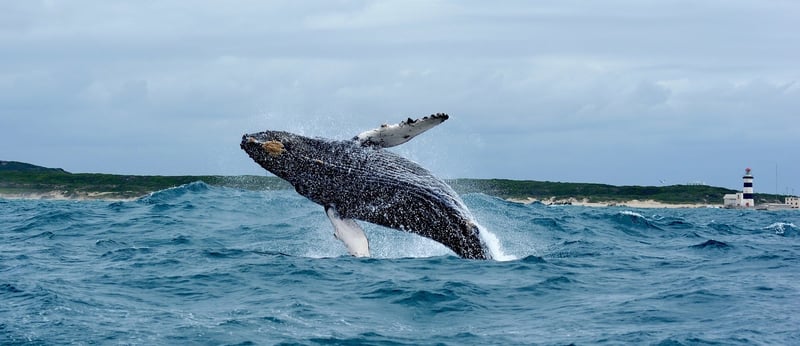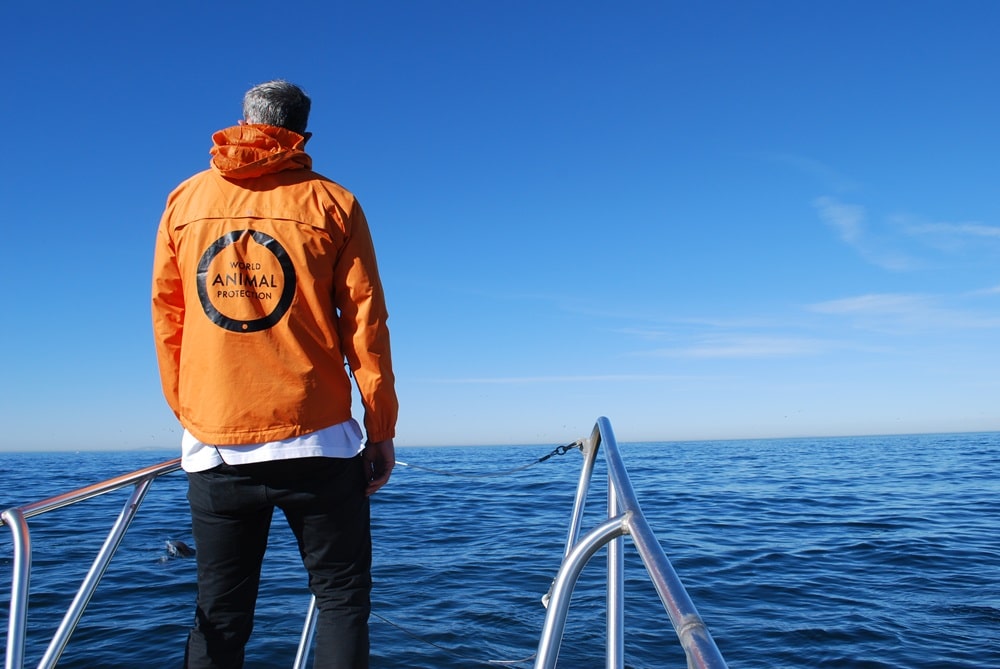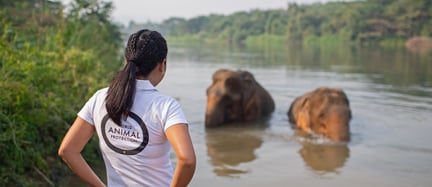
Global initiative launched to promote responsible wildlife tourism
News
A new global initiative has been launched by World Animal Protection and World Cetacean Alliance to change the way people travel to see wildlife forever.
Image credit: Lloyd Edwards / Raggy Charters
The initiative called 'Wildlife Heritage Areas' is being introduced in collaboration with responsible travel companies and wildlife charities. Their collective vision is to reshape the way people experience wildlife during their travels.
Designed to offer responsible wildlife encounters, the Wildlife Heritage Areas programme was developed in response to the growing demand from tourists who seek authentic wildlife experiences as ethical concerns regarding the treatment of wild animals in zoos and parks are on the increase.
Current Wildlife Heritage Areas
- Amazon Night Monkey Heritage Area (candidate), Peru/Colombia
- Amazon Uakari Heritage Area (candidate), Brazil
- Apennines Marsican Bear Heritage Area (candidate), Italy
- Whitsundays Whale Heritage Area (candidate) Australia
- Santa Barbara Channel Whale Heritage Area (new designation), USA
- Madeira Whale Heritage Area (new designation), Portugal
- Plettenberg Bay Whale Heritage Area (designated), South Africa
- Algoa Bay Whale Heritage Area (designated), South Africa
In the Wildlife Heritage Areas programme, designations carry specific meanings. "Candidate" indicates that the applicant has progressed to the second level of the three-tier designation process. "Designated" refers to a successful completion of all three designation levels. And "New Designation" means the recent achievement of the third level, designating a fresh addition to the Wildlife Heritage Areas network.
Angela Maldonado, founder of Entropika, a conservation NGO and part of the Wildlife Heritage Network, comments:
The Amazon Night Monkey Heritage Area covers 640 km2 in Vista Alegre on the Colombian-Peruvian border. It offers low-impact nature activities, such as jungle hikes, wildlife watching tourism and experiential tourism, which are all guided by knowledgeable locals.
These local stewards of the forest are critically important in helping to alleviate outside pressure that the monkeys face from a range of issues including trafficking for biomedical research and deforestation." Another example is The Apennines Marsican Bear Heritage Area in Italy, which covers 1100 km2 and focuses on the critically endangered Marsican brown bear, which is a central part of local history and culture, inspiring wildlife watchers to focus on the vibrant and dynamic landscape elements.
Dylan Walker, Wildlife Heritage Areas, said:
We believe Wildlife Heritage Areas will benefit both the local community and wildlife in responsible wildlife watching destinations. By working in partnership with locals, charitable and responsible tourism experts, we can showcase how culture, responsible tourism, and ideas for coexistence can create a better future for places, nature, and people.
The travel industry currently has no means of identifying destinations meeting high standards of responsible wildlife watching. The Wildlife Heritage Area programme changes this.

Nick Stewart, Wildlife Campaign Director - World Animal Protection, said:
We’re delighted to have co-founded Wildlife Heritage Areas as a solution to exploitative wildlife tourism. We invite travel companies around the world to drop the elephant rides, ditch the dolphin shows and any of the other demeaning wildlife entertainment experiences out there and instead, get behind truly responsible wildlife tourism that meets the needs of local communities, visitors and of course wild animal welfare.
In addition, Wildlife Heritage Areas will create new opportunities for visitors to engage with the unique culture, heritage and biodiversity that underpins each local community's wildlife offering. This will help to generate pride and income for the responsible protection of wildlife and habitats.
Harry Eckman, CEO, World Cetacean Alliance, said:
Wildlife Heritage Areas are an exciting and perfect evolution of the WCA's successful Whale Heritage Area program. Wildlife Heritage Areas will provide the communities with a unique opportunity to showcase and celebrate their heritage and connection to amazing species and environments, and will provide tourists with an incredible opportunity to experience wildlife in the most inspiring ways.
Tourists now have the opportunity to explore destinations where local communities play a pivotal role in preserving and nurturing the wildlife around them. They can actively support these communities while enjoying sustainable and immersive tourism experiences.
Together we're changing the way the world works to protect animals.
Wildlife tourism
If a venue that houses wildlife allows you to ride, hug, cuddle or take a selfie with a wild animal, cruelty is surely involved.
Support us
Your support is key to bringing an end to animal suffering across the world and here in Aotearoa New Zealand


